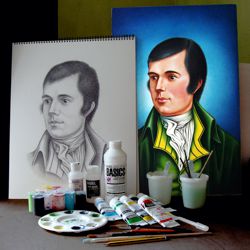Acrylic Portraits - Painting the Clothes
This lesson illustrates how to paint the folds and fabrics of the clothes in our acrylic portrait.
Painting the Shirt

Painting the folds of the shirt.
The underpainting of the shirt was built up with glazes of titanium white to create a luminous background onto which the darker tones of the folds were applied.

The folds of the shirt are stippled with small brushes.
Fortunately, the original pencil drawing is still visible through the underpainting and the form of the folds were easily outlined with a fine brush in grey. Finally, the soft texture of the material was suggested by using a transparent grey glaze (equal mixtures of red, yellow and blue ) that was carefully stippled and blended with small sable brushes (size 00).
Painting the Waistcoat
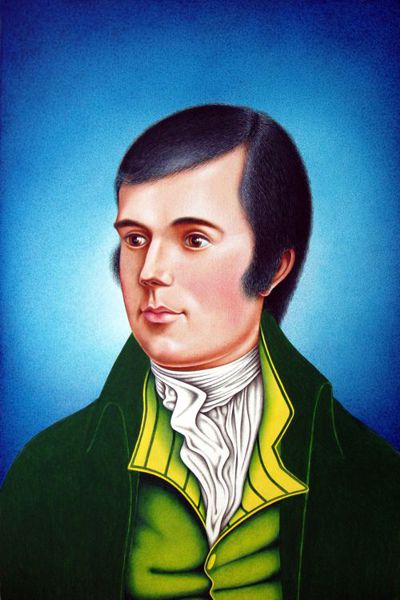
Glazes of color unify the texture of the waistcoat.
The underpainting of the waistcoat was done in yellow medium azo. Next, the stripes inside the waistcoat were simply painted with several glazes of sap green to create a flat, even lines. The tones of the folds on the rest of the garment were rendered by gradually building up more layers of sap green to deepen the shades of the darkest areas. Finally, the excessively bright yellow front of the waistcoat was subdued with several flat glazes of sap green. Prussian blue was then stippled to deepen the tones of the darkest areas.
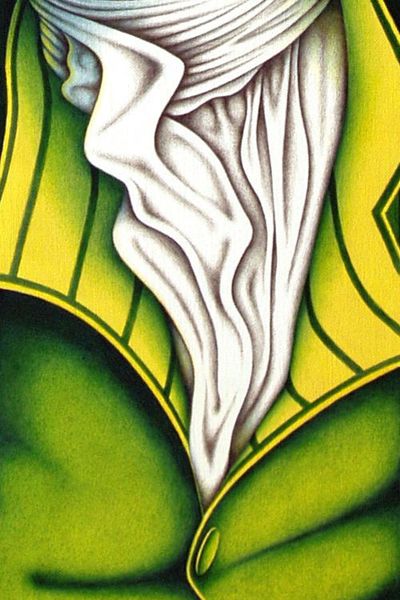
Close-up detail of the shirt and waistcoat.
In our close-up detail, you can see the tonal, textural and color effects of the paint surface on our shirt and waistcoat. You will notice that their folds have been created by minute stippling with darker colors, the darkest tones more densely stippled than the lighter ones.
Painting the Jacket
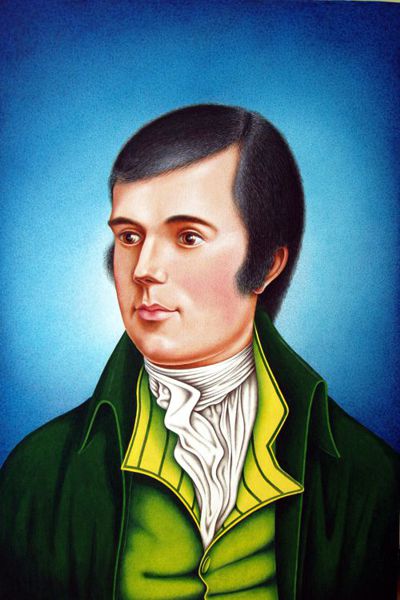
The application of dark tones to the jacket.
The underpainting of the jacket was built up with several glazes of sap green to achieve a dark translucent surface. The edge of the lapels and collar of the jacket received fewer coats of the glaze to highlight their outline.
The rendering of folds on the jacket was achieved by following the usual process:
- applying the dark tones
- applying the light tones
- refining their tone, color and texture
The dark tones were painted with thicker than usual glazes of Prussian blue mixed with sap green and applied with a half inch filbert brush. It is natural to paint more freely with a larger brush so you must be careful with your drawing. Consequently, the darker tones which establish the structural shape of the folds were worked out in a preparatory study so that little was left to guesswork.
Artists often use a more spontaneous painting technique with looser brushwork when they paint the peripheral garments in a portrait. This creates a contrast with the sharper detail of the head. For the same reason, the tone and detail of our jacket fades towards the edge of the portrait to reduce any possible distraction from the focal point of the face.
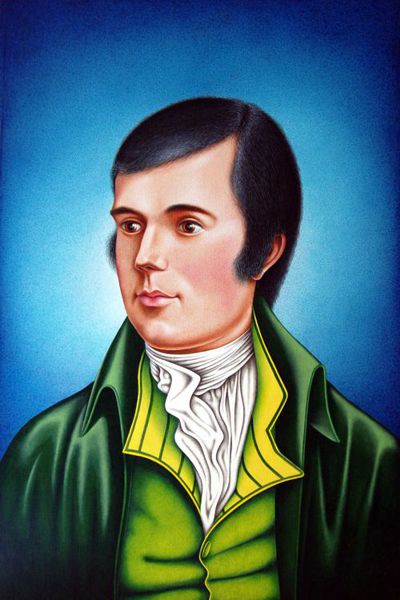
The application of light tones to the jacket.
The light tones were painted with a mixture of permanent light green mixed with titanium white and applied with a quarter inch filbert brush. It was important to use titanium white in the mixture as its opacity was necessary to cover the dark underpainting. The light tones begin to establish the highlights in the folds of the cloth. Their color should be mixed brighter than is necessary because they will lose some of their intensity when they are blended into the underpainting.
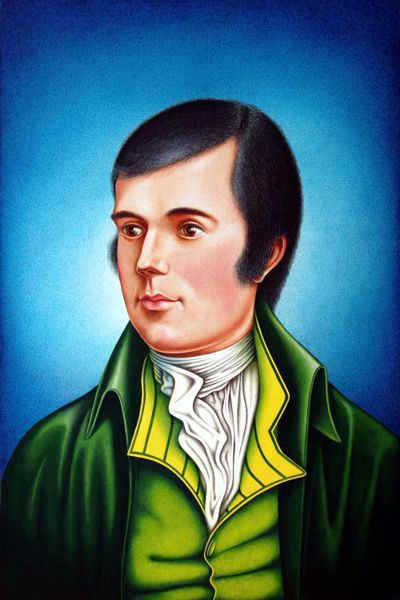
Refining the tone, color and texture of the jacket.
Refining the tone, color and texture is the final stage in painting the jacket. The aim is to carefully blend and balance the dark and light tones with the underpainting, smoothing out any awkward looking bumps and filling in any irregularities in the paint surface. This process has the effect of reducing the contrast between the darkest and lightest tones and unifying the form to create a smooth fabric with natural folds.

Close up of the painting technique on the jacket.
This detail gives a close-up view of the painting technique used for the jacket. The basic dark and light tones were rendered with larger and stiffer hogs-hair brushes to match the scale of the area being painted and for greater control over the thicker paint. Brushing and smudging was the technique that was most usefully employed at this stage. The refinement of tone, color and texture was executed with thinner glazes of color and mostly stippled with softer brushes to smooth out any irregularities. Some very fine glazes of white and yellow were carefully built up with small brushes to highlight the form, while glazes of Prussian blue and ivory black were applied to increase the depth of the darkest areas.

